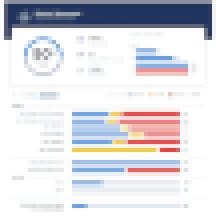In early 2018, when I took over as superintendent at Garland ISD, which is located near Dallas, we were invited to join the steering committee of a community initiative dedicated to tackling a troubling skills gap. The consortium of concerned businesses, nonprofits and schools who took part in the program, called Dallas County Promise, were all feeling the effects of local young people not being qualified for the job opportunities in our own backyard.
In the Dallas Fort Worth region, 30 percent of jobs are now considered mid-skill, meaning they require an associate degree or technical certificate. This doesn’t include the wealth of high-skill opportunities that require even more advanced degrees. Meanwhile, less than 30 percent of Dallas County high school graduates overall—including only 10 percent of our low-income high school graduates—are completing degrees within six years of graduation.
The Dallas County Promise philosophy is this: If we can help all students—every one—build a career readiness plan that’s both exciting and realistic for them, we can come together as a community to help them obtain the financial aid and other support they need to make their dreams a reality. The goal as we see it is something we call “60x30TX,” or 60 percent of Texas adults ages 25-34 will hold a degree by 2030. Our solution has a lot to do with data, namely the way it’s collected and leveraged across disparate systems.
The first year of piloting this program was a huge group effort. We had countless discussions as a committee, and the Garland ISD IT team devoted a substantial amount of effort to achieving data interoperability, or the ability for data from one system to talk to another. We worked closely with Ed-Fi, a nonprofit alliance active in this area, so that student information like test scores and grades could flow securely from multiple systems into one dashboard for our counselors, who could begin using it to inform their decision making.
By the end of that first pilot year, it was evident that the work would pay off. We saw a 30 percent increase in area students enrolled at the University of North Texas and Dallas Community College District and a 6 percent increase in enrollment in colleges nationwide. The state of Texas also ranked No. 4 in the nation for FAFSA completion
We felt these successes directly at Garland ISD, and in the second pilot year, we brought two more of our high schools into the program. Last year produced even more promising results, including a 7 percent increase in FAFSA completions and $4.5 million dollars in new PELL grant dollars awarded to Dallas area students. By then, Texas was ranked No. 2 in the nation for FAFSA completion.
Garland ISD was honored to receive the Bright Spot Award last year for our 5 percent growth in college enrollment. That’s nearly 3,000 more students in our district going off to college each year, feeling prepared and supported because of this multifaceted program.
The results continue to grow. I see this as a great step toward student equity and a powerful investment in the economic prosperity of our communities. And it wouldn’t be possible without data interoperability at its core.
A Key to Success
Garland ISD is an extremely diverse, large urban school district. 61 percent of our students are economically disadvantaged and 25 percent are English language learners. Our students certainly don’t have the wealth of some of our neighboring districts, but I deeply believe that they have the same worth.
What many people in education don’t realize is that data, when collected properly and protected diligently, is the key to prepare our students—especially our most vulnerable students—for life after high school. Our successes in Garland ISD over the last two years demonstrate the immense power of data and technology to create promising pathways for all students. What’s more, this commitment to our students will positively impact our larger community and economy, guaranteed.
Dallas County Promise is unique in that our counselors are able to surface aggregated, real-time student data including SAT and ACT scores, class grades, participation in AP courses, work towards industry certifications and armed forces enlistment, all in one dashboard. None of that would be possible without strong data interoperability.
The college and career readiness dashboard we’ve introduced in three of our Garland ISD schools is a custom-built Eduphoric product that—to someone who isn’t a data scientist—feels a little bit like magic. Previously, our teachers and counselors were trying to piece together this information by comparing spreadsheets exported from multiple systems that held grades, test scores and other data points in isolation. Now, a Garland ISD counselor can view holistic Student Scorecards that are updated in real-time.


This comprehensive view allows us to track each student’s unique path toward college and career, identify roadblocks quickly, and anticipate the need for support faster. These tech tools are paired with the Dallas County Promise Pledge, which has students commit to apply to college or community college, submit their financial aid applications, register for school and enroll in courses. The pledge helps students connect with a variety of scholarship and financial aid sources including "last-mile scholarships,” as well as success coaches, mentors, and other resources, ensuring they can embark on the college and career pathways of greatest interest to them immediately after graduation.
The information in our dashboard for counselors is color-coded to reveal whether a student has excelled, barely missed an important milestone or needs significant help in a given area. It’s highly actionable; our counselors can see at a glance which students need test prep courses, workshops or to retake a test. The dashboard paints a full picture of each student’s situation and empowers counselors to do what they do best: coach and mentor.
Data interoperability creates a stronger support network because a student, their counselors and their teachers all have a better understanding of that student’s options and the help they need. By my definition, this is what student equity is all about; offering as much support as a student needs, financially and otherwise, to ensure equal opportunity.
The Dallas County Promise program is achieving remarkable results, and the Ed-Fi technology solutions behind our college and career readiness dashboard are freely available for other districts to use. What's more, our implementation of Ed-Fi allows us to securely manage our student data according to modern industry best practices.
While some school districts in the country are still capturing sensitive student data in spreadsheets, the technologies we have in place ensure the right data is available from the right sources, at the right time, only to the right counselors and educators and for the right purpose: to serve our learners' needs and interests and connect them with opportunities.
Creating a Better Data Culture
Now that Garland ISD’s data is standardized and aggregated, the sky's the limit for how we can surface insights to inform our decision making.
I see data as the key to achieving student equity. Here is a critical example of this: When I started in Garland ISD, I learned that our African American male students were being disciplined disproportionately compared with other students. Without high-quality data, we wouldn’t have been able to identify this serious problem. And because of the data, we’re rapidly testing and assessing solutions.
Another important benefit of this work is that we’re creating a culture of data and technology in our district. Our students all have access to Google Chromebooks, which sends the message that they’re bright, sophisticated and worth just as much as the wealthier students down the road. Our educators are able to make data-informed decisions in the classroom and in meetings with parents. When our students are getting the best and see this technology in use all around them, it levels the playing field and inspires them to pursue the lucrative careers of today and tomorrow.
Data interoperability is (luckily) not something a superintendent needs to set up or manage. But we should all be aware of the incredible benefits and give our data and technology teams the green light to prioritize cleaning up, standardizing and securing our data. For us, data is not only the future; our students and educators deserve it now.


